Why the Tongguan Kiln Site is a Must-Visit for History Buffs and Art Lovers
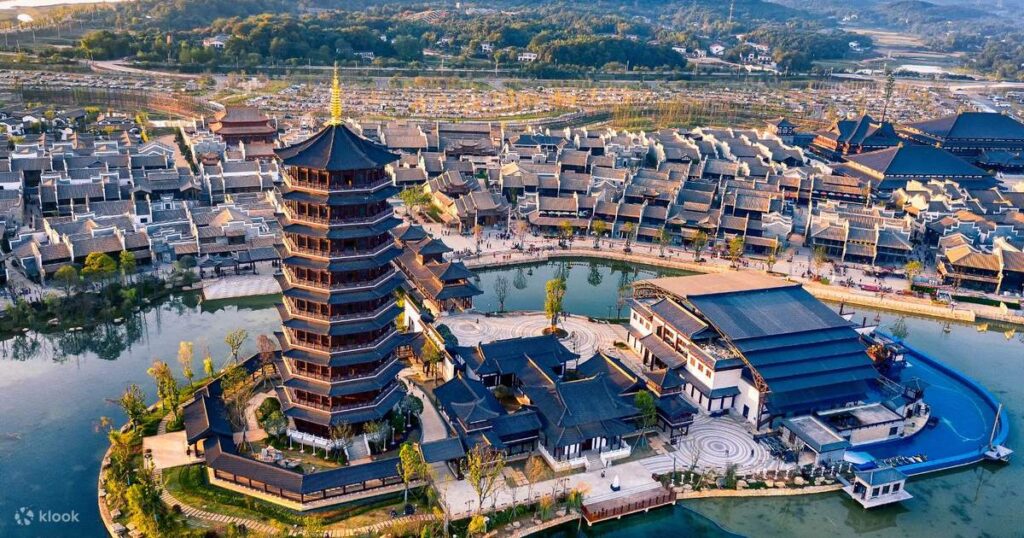
An Essential Guide to Visiting Tongguan Kiln Site
In This Guide
- An Essential Guide to Visiting Tongguan Kiln Site
- The Rich History and Legends of Tongguan Kiln Site
- Main Highlights: What You Absolutely Can’t Miss
- Planning Your Visit: A Practical Guide
- Tickets: Prices, Booking, and Tips
- How to Get There: A Complete Transportation Guide
- Local Cuisine and Accommodation Nearby
- Frequently Asked Questions
- Final Thoughts on Your Trip
Nestled in the picturesque landscapes of Wangcheng County, just outside of Changsha, the Tongguan Kiln Site offers a fascinating glimpse into China’s rich ceramic heritage. This archaeological treasure, dating back to the 700s AD, is not merely a site for history enthusiasts; it’s an immersive journey through time that reveals the ancient art of pottery production in one of the country’s oldest kilns.
As you wander through the site, you’ll encounter excavated ruins and remnants of ceramic wares that tell tales of craftsmanship and trade, providing a tangible connection to the artisans who once toiled here. The site is thoughtfully curated with bilingual signage, making it accessible for international visitors eager to learn about this significant chapter in Chinese history.
What to Expect
-
Archaeological Insights: Explore the various excavations where ancient pottery was produced and discarded. Each area narrates the kiln’s operational history, showcasing how thousands of pots were fired at a time.
-
Unique Firing Techniques: Learn about the innovative firing methods that harnessed the power of the sun and the natural inclines of the hillside, a stark contrast to contemporary kiln practices.
-
Museum Experience: The on-site museum houses artifacts and provides in-depth explanations of the kiln’s sections, all designed to enrich your understanding of this ancient craft.
-
Authentic Artifacts: Witness the remnants of ceramics that have traveled the globe, including pieces recovered from shipwrecks that highlight the influence of Tongguan Kiln on international trade.
-
Shopping Opportunities: While you’re there, don’t miss the gift shop featuring locally crafted ceramics—ideal mementos of your visit, though keep in mind they may be priced higher than those found in nearby villages.
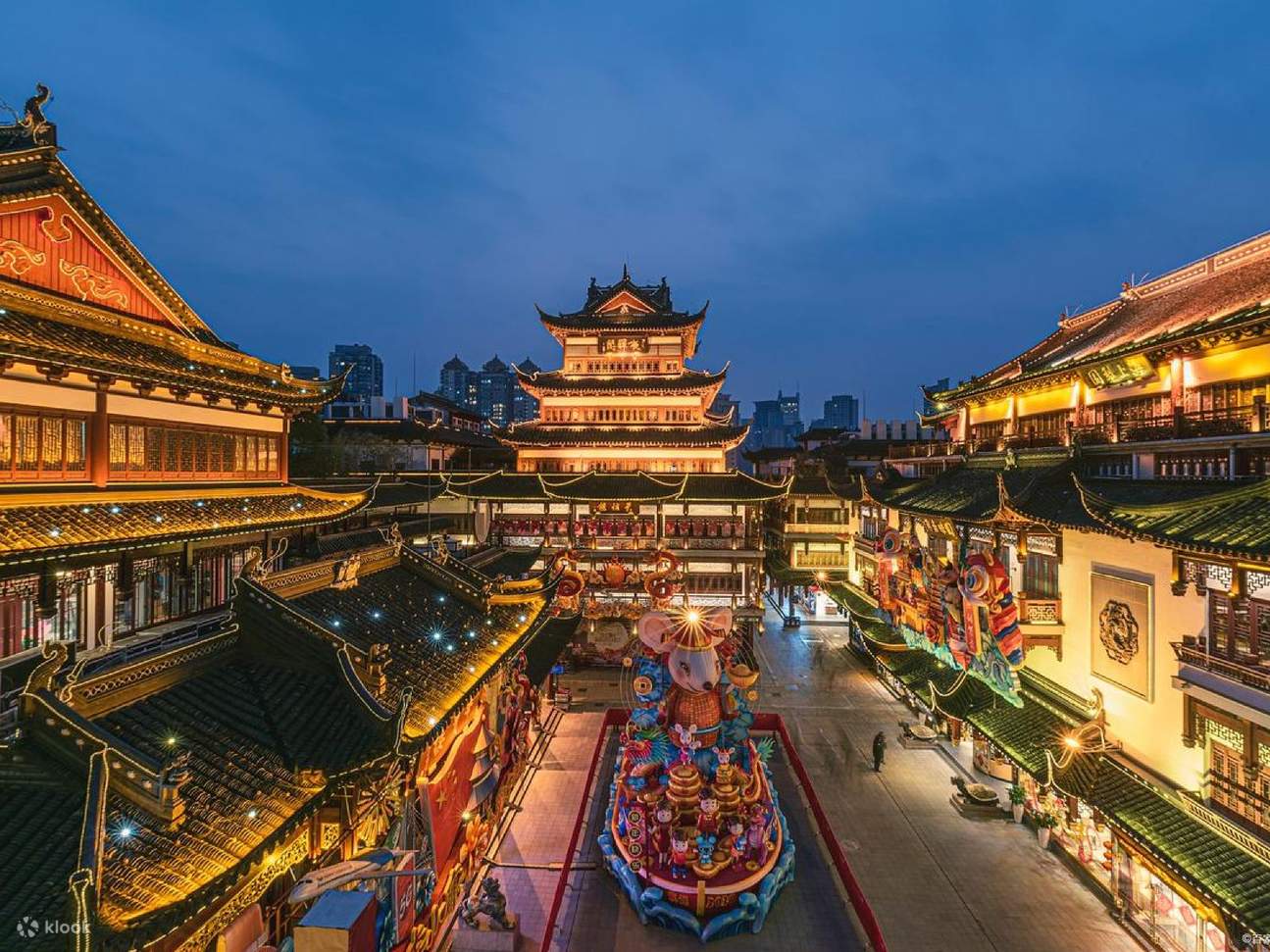
Tongguan Kiln Site.
This site is a must-visit for anyone captivated by history, culture, and the intricate artistry of ceramics. Whether you’re an avid historian or simply curious about the past, the Tongguan Kiln Site promises a rewarding exploration of China’s ancient traditions.
The Rich History and Legends of Tongguan Kiln Site
A Journey Through Time at Tongguan Kiln
Nestled in the rolling hills outside Changsha, the Tongguan Kiln Site (铜官窑遗址) serves as a remarkable portal to China’s rich historical and cultural tapestry. This ancient site, dating back to the 8th century during the Tang Dynasty, is not only an archaeological treasure but also a testament to the artistry and craftsmanship of Chinese ceramics.
The Historical Significance
The Tongguan Kiln was once a bustling center of pottery production, renowned for its high-quality ceramics. As one of the earliest and most significant kilns in Chinese history, it produced thousands of exquisite pieces, including pots, plates, and figurines. The kiln’s strategic location along trade routes facilitated the distribution of these goods, allowing them to reach far-off markets in Asia and beyond.

Tongguan Kiln Site.
Excavations at the site have uncovered a trove of artifacts, including remnants of ruined pots and ceramics that provide insight into the operational scale and frequency of the kiln’s use. The structures reveal a sophisticated understanding of kiln design and firing techniques, utilizing the natural inclines of the hills to harness solar energy for the drying and firing processes.
Legends and Myths
The Tongguan Kiln is steeped in local legends that add a layer of mystique to its historical narrative. One popular tale speaks of a master potter who, through divine inspiration, created a series of unique glazes that became the envy of neighboring regions. It is said that these glazes, with their vibrant colors and luster, were so beautiful that they attracted the attention of emperors and dignitaries, further enhancing the kiln’s reputation.
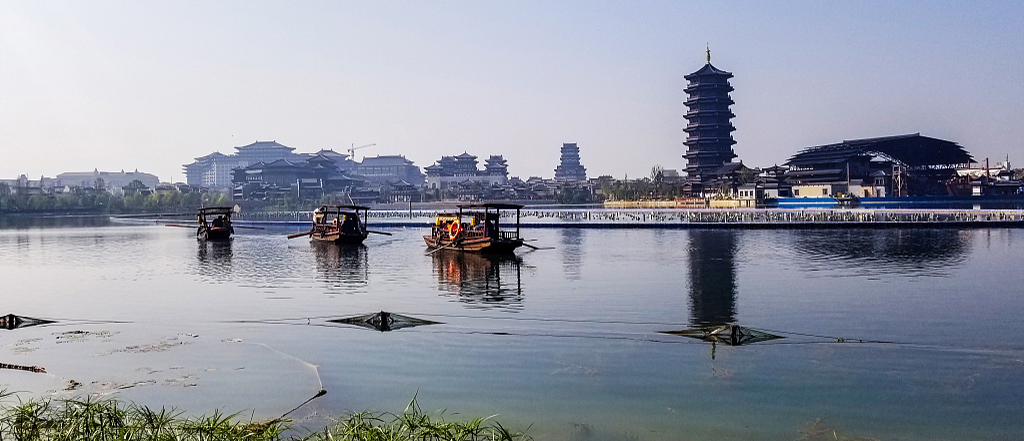
Tongguan Kiln Site.
Another legend recounts the story of a shipwreck off the coast of an Asian island, where ceramics from the Tongguan Kiln were discovered. These artifacts traveled across the seas to Europe, igniting a fascination with Chinese pottery that would influence global ceramic styles for centuries. This narrative not only highlights the kiln’s international significance but also underscores the interconnectedness of ancient trade networks.
The Experience Today
Visitors to the Tongguan Kiln Site can immerse themselves in the history of this ancient production hub. The site is thoughtfully presented with bilingual signage, ensuring that both local and international visitors can appreciate its significance. Areas of the original clay hillside are exposed and clearly marked, allowing guests to visualize how the kiln operated and how thousands of items were produced during each firing cycle.
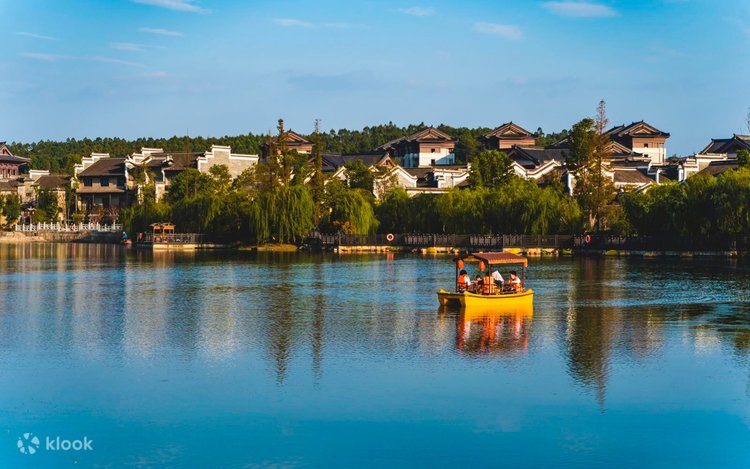
Tongguan Kiln Site.
Inside the on-site museum, you’ll find displays of finished ceramics and artifacts that showcase the evolution of pottery techniques over the centuries. A gift shop offers a selection of locally crafted items, allowing you to take a piece of this rich heritage home with you.
Conclusion
The Tongguan Kiln Site is more than just an archaeological landmark; it is a celebration of China’s enduring legacy in ceramics and craftsmanship. As you wander through the ruins and imagine the potters of ancient times at work, you will gain a deeper appreciation of their artistry and the cultural significance of their creations. Whether you are a history enthusiast, a pottery lover, or simply a curious traveler, the Tongguan Kiln invites you to explore its remarkable past and partake in its enduring legends.
Main Highlights: What You Absolutely Can’t Miss
Explore the Rich Heritage of Tongguan Kiln Site
Nestled in the heart of Wangcheng County, the Tongguan Kiln Site offers a captivating glimpse into China’s ancient ceramics industry, dating back to the 700s AD. This archaeological gem not only showcases the ingenuity of early Chinese pottery but also immerses visitors in a historical narrative that has shaped the region’s cultural landscape. Here are the main highlights that you absolutely cannot miss during your visit:
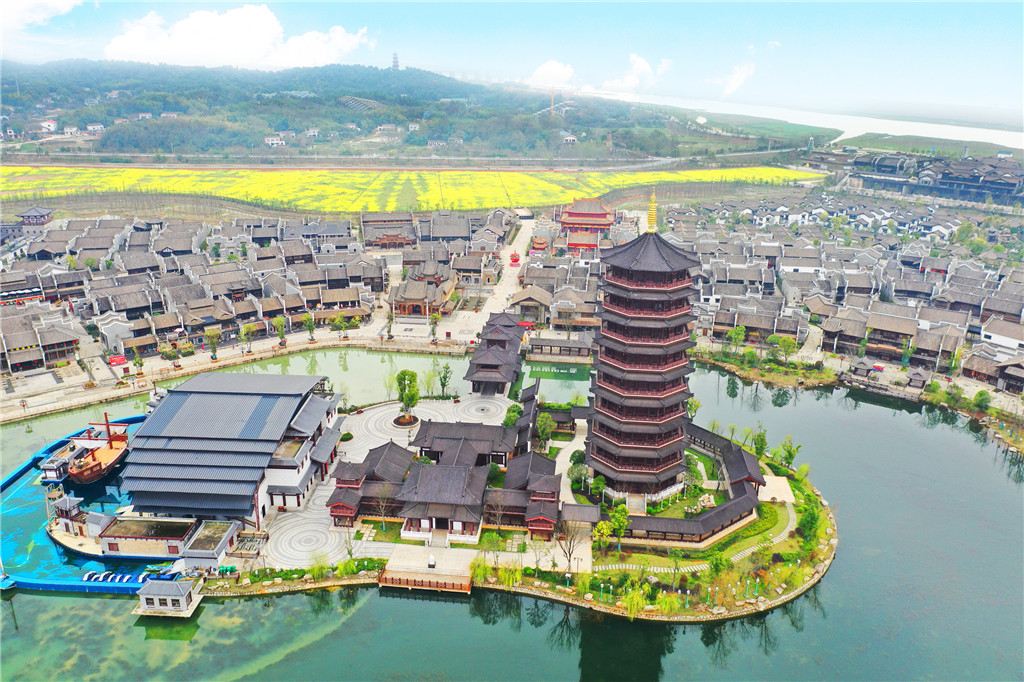
Tongguan Kiln Site.
1. The Archaeological Excavations
Step into the fascinating world of ancient pottery as you explore the various excavation sites scattered throughout the kiln area. You’ll encounter remnants of discarded pots and ceramics, buried under layers of earth, which tell the story of the kiln’s prolific use over centuries. Each section of the excavation is clearly marked and accompanied by bilingual signage, making it easy for international travelers to understand the significance of what they are viewing.
2. The Unique Firing Process
Witness a distinct firing technique that sets the Tongguan Kiln apart from other ceramic production sites. Unlike typical kilns, here, items are fired using the natural heat of the sun, taking advantage of the region’s geographical features. This method not only reflects the innovation of ancient artisans but also offers a glimpse into sustainable practices that were prevalent long before modern technology.
3. The On-Site Museum
Don’t miss the opportunity to visit the museum located at the site, where you can delve deeper into the history and development of the Tongguan Kiln. The exhibits include beautifully preserved ceramics, with some items even linked to historical shipwrecks that traveled from Asia to Europe. The museum features air-conditioned comfort and well-illustrated displays, making for a pleasant and informative experience.
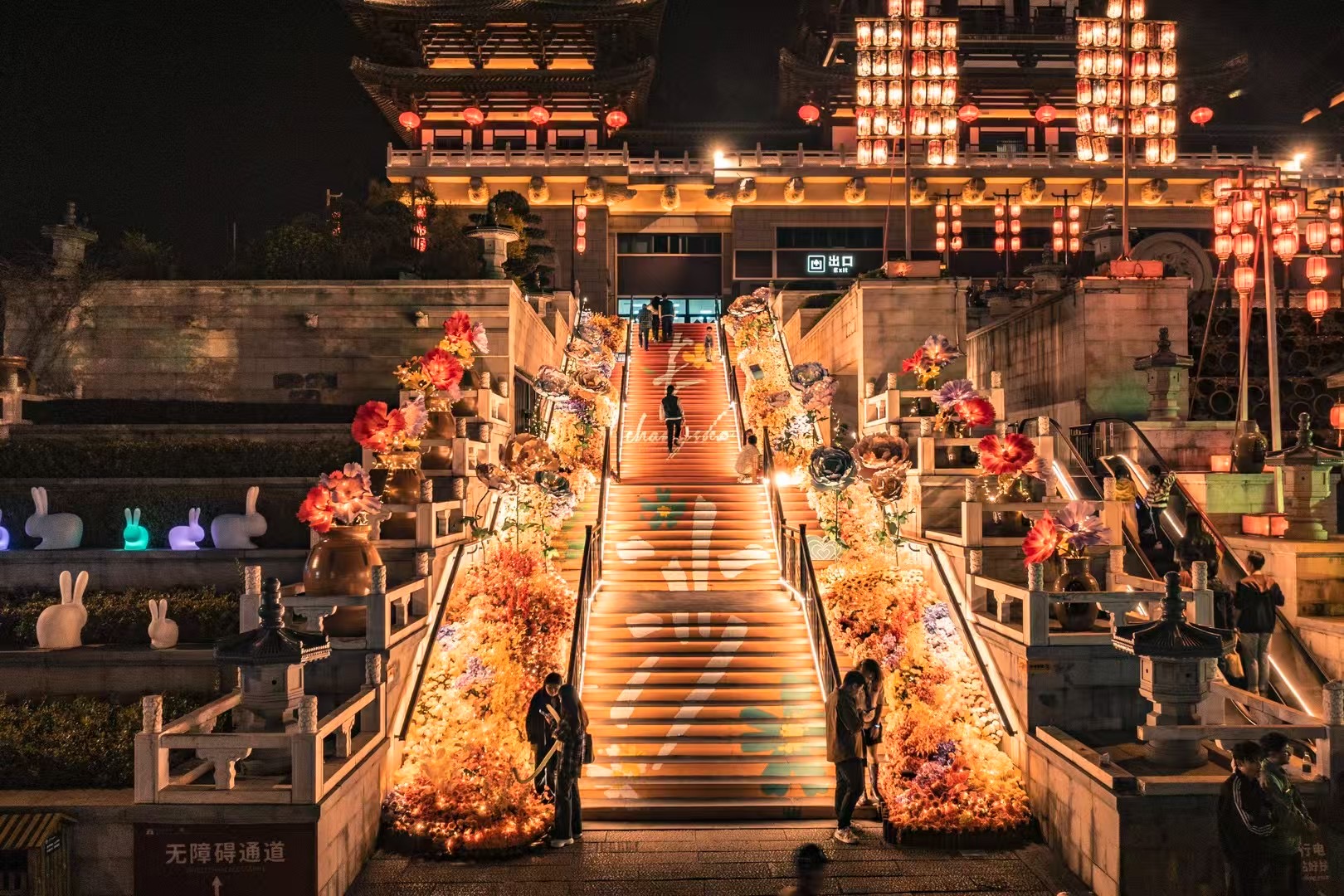
Tongguan Kiln Site.
4. Stunning Ceramics Displays
Marvel at the exquisite ceramic pieces displayed throughout the site. These artifacts not only represent the artistic skills of ancient potters but also their technical mastery. The unique styles of pottery on display are some of the oldest known, making this site a treasure trove for history enthusiasts and art lovers alike.
5. Gift Shop and Local Handicrafts
Before you leave, stop by the gift shop located within the kiln premises. While the prices may be slightly higher than those in the nearby village, the items available are often one-of-a-kind and reflect the craftsmanship of local artisans. Supporting these craftsmen helps preserve traditional techniques and provides you with a unique souvenir of your visit.

Tongguan Kiln Site.
6. Scenic Surroundings and Accessibility
The Tongguan Kiln Site is set against a backdrop of natural beauty, with gentle hills and lush landscapes enhancing your visit. While some areas require navigating steps, the site is manageable for most visitors. Its authenticity and serene environment make it an ideal spot for those seeking both historical insight and a peaceful retreat.
7. Planning Your Visit
As you plan your trip to this remarkable site, keep in mind that it is less crowded than some of China’s more famous attractions, such as the Terracotta Warriors. However, with a large hotel complex currently under construction nearby, it’s advisable to visit soon to experience the site’s tranquility before it becomes a bustling tourist destination.
The Tongguan Kiln Site is not just a destination; it’s a journey back in time, offering a rich tapestry of history, art, and culture. Whether you are a history buff, a pottery enthusiast, or simply someone looking to explore the lesser-known facets of Chinese heritage, this site promises an enriching experience that will leave a lasting impression.
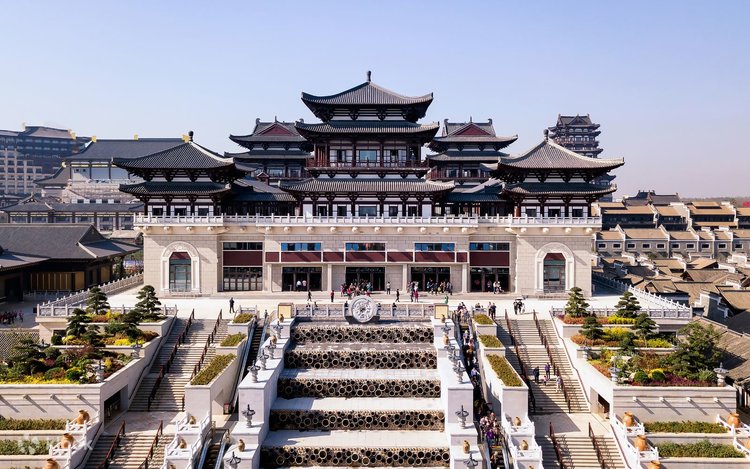
Tongguan Kiln Site.
Planning Your Visit: A Practical Guide
Discovering the Tongguan Kiln Site: A Practical Guide
Nestled in Wangcheng County, just outside of Changsha, the Tongguan Kiln Site (铜官窑遗址) offers a captivating glimpse into ancient Chinese pottery production. This archaeological treasure, dating back to the AD 700s, is a must-visit for travelers intrigued by history and culture. Here’s everything you need to know to plan your visit.
Getting There
Location:
Caitaoyuan Village, Dingzi Town, Wangcheng County, Hunan Province, China.
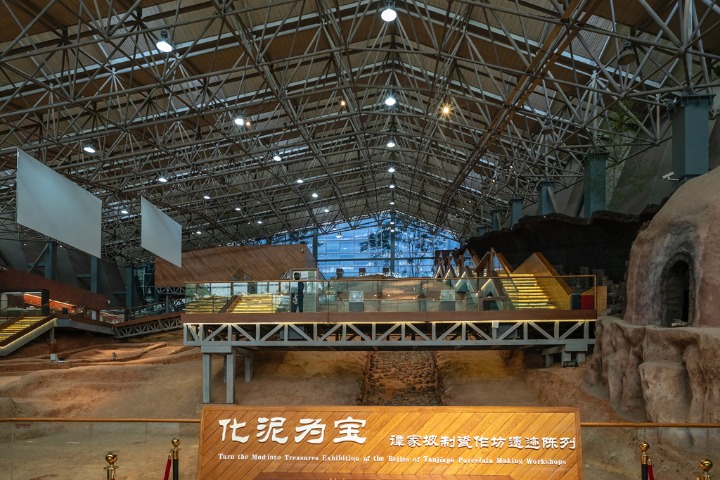
Tongguan Kiln Site.
Transportation:
– By Car: The site is approximately a 30-minute drive from Changsha city center. Renting a car or hiring a taxi are convenient options.
– Public Transport: Buses run from Changsha to Wangcheng County. Check local schedules for the most current routes and timings.
Opening Hours
The Tongguan Kiln Site is open 24 hours a day, but visitor facilities like the museum may have specific operating hours. It’s advisable to visit during daylight for a better experience.
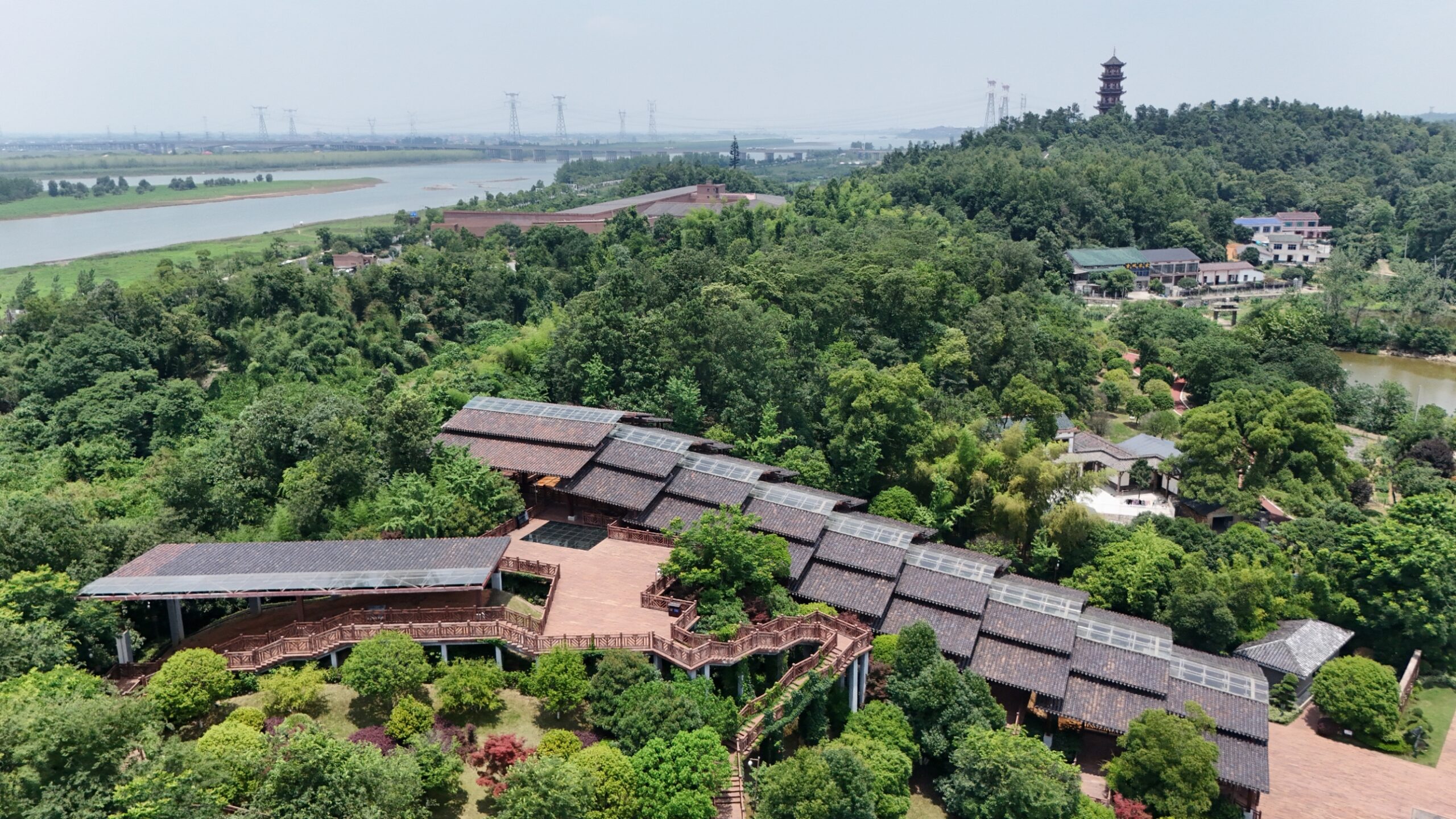
Tongguan Kiln Site.
What to Expect
The Tongguan Kiln Site is not just an archaeological site; it is a narrative of ancient craftsmanship. Here’s what you can look forward to:
- Excavation Areas: Explore areas where ancient ceramics and pottery shards have been uncovered. These remnants provide insight into the kiln’s historical usage and production methods.
- Museum Displays: The on-site museum features well-curated exhibits, complete with bilingual signage in Chinese and English, making it easy for international visitors to understand the significance of what they are viewing. Expect air-conditioned comfort as you delve into the past.
- Firing Techniques: Witness the unique firing processes used in ancient times, which relied on solar heat and the natural contours of the landscape. This is a fascinating aspect that differentiates Tongguan Kiln from other historical sites.
- Artifacts: View finished pottery items that were traditionally dried and fired in the kiln. Some artifacts have even been traced back to shipwrecks, illustrating the extensive trade networks of the time.
Visitor Tips
- Physical Accessibility: While the site is largely manageable, be prepared for some steps. Visitors with mobility issues can still enjoy much of the site, but it’s wise to proceed with caution.
- Timing Your Visit: Consider visiting soon, as a major hotel complex is under construction nearby, which may increase foot traffic in the future. Early mornings or weekdays are typically less crowded.
- What to Bring: Comfortable walking shoes are a must, along with a water bottle to stay hydrated, especially if you’re visiting during the warmer months.
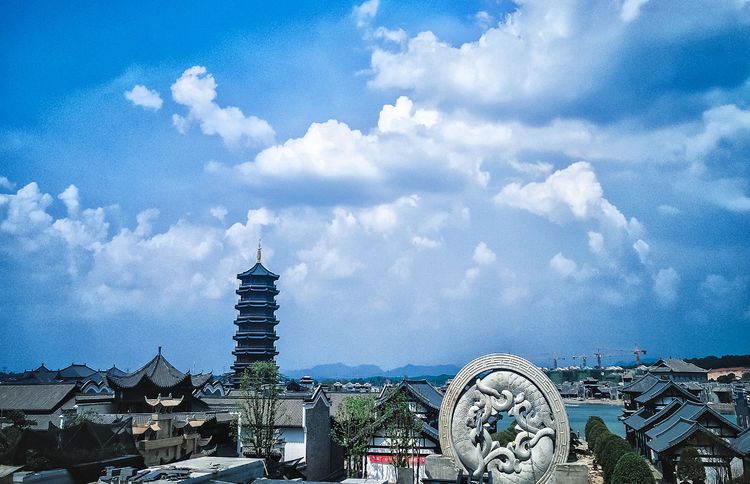
Tongguan Kiln Site.
Nearby Attractions
While the Tongguan Kiln is the highlight, there are several other points of interest nearby:
- Zhongkui Temple: A serene religious site rich in history, just a short drive away.
- Guo Liang Martyr Tomb: A poignant landmark that commemorates local heroes.
- Wenxing Stone Tower: An architectural gem worth exploring for history enthusiasts.
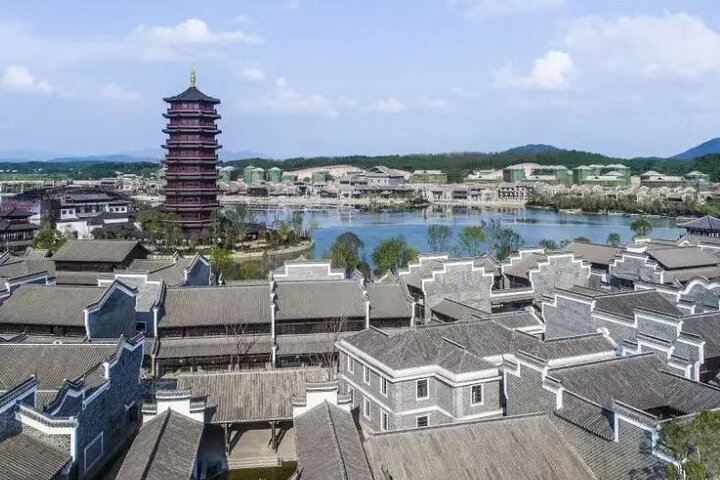
Tongguan Kiln Site.
Shopping and Dining
At the Tongguan Kiln Site, you’ll find a gift shop offering unique ceramics. Prices may be higher than those in nearby villages, but the quality and authenticity are often worth the investment. For dining, consider stopping by local eateries in Wangcheng County to sample traditional Hunan cuisine, renowned for its bold flavors.
Final Thoughts
The Tongguan Kiln Site is a remarkable place where history comes alive. Whether you’re an avid historian, a pottery enthusiast, or simply curious about ancient Chinese culture, this site offers an enriching experience that will deepen your understanding of the region’s heritage. Enjoy your journey through time!
Tickets: Prices, Booking, and Tips
Visiting the Tongguan Kiln Site: Ticket Information, Booking, and Tips
Embarking on a journey to the Tongguan Kiln Site offers a unique glimpse into China’s rich history of pottery production and craftsmanship. To make the most of your visit, here’s what you need to know about tickets, booking, and some helpful tips to enhance your experience.
Ticket Prices
- General Admission: Approximately ¥30 (Chinese Yuan) per person.
- Discounted Tickets: Senior citizens, students, and children may be eligible for reduced rates. Be sure to bring identification to confirm eligibility.
- Family Passes: Some visitors may find it economical to inquire about family or group rates at the ticket counter.
Booking Information
- Advance Reservations: While tickets can be purchased on-site, it is advisable to book in advance during peak tourist seasons (spring and autumn) to ensure availability. Some online platforms may offer the option to reserve tickets ahead of time.
- Opening Hours: The site is open 24 hours a day, allowing for flexible visits. However, guided tours and museum facilities typically operate from 8:00 AM to 5:00 PM.
- Guided Tours: If you’re keen on a deeper understanding of the kiln’s history and significance, consider joining a guided tour. These are usually available for booking at the site, and English-speaking guides can be arranged upon request.
Tips for Your Visit
- Plan Your Time: Allocate at least 1-2 hours to explore the site thoroughly. The museum features bilingual signage, making it accessible for international visitors.
- Footwear: Wear comfortable shoes as the site includes uneven terrain and steps. Some areas may require light hiking.
- Photography: Don’t forget your camera! The kiln site offers impressive photo opportunities, especially the ancient kilns and ceramic artifacts.
- Visit the Gift Shop: A small gift shop is available, offering beautifully crafted pottery and souvenirs. Prices may be higher than in nearby villages, but the quality is often worth the splurge.
- Stay Informed: Keep an eye on local news regarding any developments around the site, as a large hotel complex is under construction nearby, which could affect visitor traffic in the future.
Getting There
The Tongguan Kiln Site is located in Caitaoyuan Village, Dingzi Town, Wangcheng County, not far from Changsha. Public transport options include buses and taxis, with many visitors opting for rideshare apps for convenience.
By understanding the ticketing process and planning ahead, your visit to the Tongguan Kiln Site can be an enriching exploration of Chinese history and culture. Enjoy your journey into the past!
How to Get There: A Complete Transportation Guide
Getting to Tongguan Kiln Site
Visiting the Tongguan Kiln Site (铜官窑遗址) in Wangcheng County offers a unique glimpse into ancient Chinese pottery production. Located just outside Changsha, this archaeological site is both accessible and distinct, making it an excellent destination for history buffs and culture enthusiasts alike. Here’s your complete guide to navigating your way there.
By Air
The closest major airport to Tongguan Kiln is Changsha Huanghua International Airport (CSX), located approximately 30 kilometers away from the site. This airport serves both domestic and international flights, making it a convenient entry point for international travelers.
- Transportation from the Airport:
- Taxi: The most straightforward option is to take a taxi directly to the kiln site. Expect to pay around 100-150 RMB, and the journey should take about 30-40 minutes depending on traffic.
- Airport Shuttle: Alternatively, you can take an airport shuttle to Changsha city center and then transfer to a taxi or local bus towards Wangcheng County.
By Train
Changsha is well-connected by rail, with services running to and from major cities across China.
- High-Speed Train:
- From Beijing or Guangzhou: Take a high-speed train to Changsha South Railway Station. This journey typically takes around 4-6 hours from Beijing and 1.5-2 hours from Guangzhou.
- From Changsha South, you can take a taxi or a local bus to the Tongguan Kiln Site.
By Bus
For those already in Changsha, taking a bus is an economical option.
- Local Buses:
- Route Numbers: Check for local buses heading towards Wangcheng County. Look for routes that specifically mention Dingzi Town or the Tongguan area.
- Duration: The bus journey may take around 1 to 1.5 hours, depending on traffic conditions.
By Car
If you prefer to drive, renting a car is a viable option, especially for those who enjoy exploring the surrounding countryside.
- Driving Directions:
- From Changsha city center, take G4 Expressway or G5513 towards Wangcheng County.
- Follow the signs to Dingzi Town, and look for directional signs leading to the Tongguan Kiln Site.
Local Transportation Options
Once you arrive in Wangcheng County, various local transportation options are available:
- Taxis: Readily available and convenient for short distances, taxis can take you directly to the kiln site.
- Bicycles and E-Scooters: Some nearby areas offer bike rentals, allowing you to enjoy the scenic views at your own pace.
Tips for Your Visit
- Language: While signs in English are available at the site, it’s helpful to have a translation app on hand for any questions or interactions.
- Accessibility: Be prepared for some steps and uneven terrain, as parts of the kiln site are not fully wheelchair accessible.
- Best Time to Visit: Spring and autumn are ideal seasons for visiting, as the weather is pleasant, making your exploration more enjoyable.
By planning your transportation effectively, you can fully immerse yourself in the rich history and cultural significance of the Tongguan Kiln Site. Whether you’re marveling at ancient pottery techniques or enjoying the serene landscape, this destination promises an enriching experience.
Local Cuisine and Accommodation Nearby
Savoring Local Flavors and Comfortable Stays Near the Tongguan Kiln Site
Visiting the Tongguan Kiln Site is not only an opportunity to delve into China’s rich ceramic history but also a chance to indulge in the vibrant local cuisine and discover inviting accommodations. Here’s a guide to enhance your experience in Wangcheng County.
Culinary Delights
1. Hunan Cuisine
– Spicy Fish Head (剁椒鱼头): A local specialty, this dish features fish heads marinated in a spicy and tangy chili sauce, making for a bold and flavorful experience that Hunan is renowned for.
– Steamed Pork with Preserved Vegetables (腊肉): This dish showcases the region’s love for preserved meats, often served alongside seasonal vegetables, delivering a hearty and savory taste.
– Hunan Rice Noodles (米粉): A beloved street food, these noodles are often stir-fried with a variety of ingredients or served in a rich broth, providing a warm and satisfying meal.
2. Local Eateries
– Tongguan Kitchen (铜官厨房): Located close to the kiln site, this eatery offers a traditional Hunan menu in a cozy setting. The friendly staff is known for their hospitality and knowledge of the dishes, which can help you navigate local flavors.
– Wangcheng Street Food Market (望城区小吃市场): Just a short drive away, this bustling market is perfect for sampling a variety of local snacks. From spicy skewers to sweet rice balls, you’ll find a plethora of options to satisfy your cravings.
Accommodation Options
1. Nearby Hotels
– Xiangjiang Hotel (湘江酒店): This comfortable hotel is located conveniently near the kiln site and offers well-appointed rooms with modern amenities. Guests can enjoy a delightful breakfast featuring local ingredients, setting a perfect start to your day of exploration.
– GreenTree Inn (如家酒店): A budget-friendly option, this hotel provides clean accommodations and a welcoming atmosphere. Its strategic location makes it easy to access the kiln site and other nearby attractions.
2. Traditional Guesthouses
– Tongguan Ancient Town Inn (铜官古镇客栈): For a more immersive experience, consider staying in a traditional guesthouse. This charming inn reflects the local architecture and offers a glimpse into the region’s cultural heritage. The owners often prepare homemade meals, allowing you to savor authentic Hunan dishes during your stay.
– Zhongkui Homestay (钟馗民宿): Just a stone’s throw from the kiln site, this homestay provides a cozy environment with personalized service. Engage with the local culture through the owners’ stories and enjoy home-cooked meals that showcase regional flavors.
Final Thoughts
Exploring the Tongguan Kiln Site is more than just a historical journey; it’s an opportunity to immerse yourself in the local culture through its cuisine and hospitality. Whether you’re indulging in Hunan’s spicy dishes or enjoying a peaceful night’s rest in a traditional guesthouse, your experience in Wangcheng County is sure to be memorable.
Frequently Asked Questions
Frequently Asked Questions about Tongguan Kiln Site
1. What is the Tongguan Kiln Site?
The Tongguan Kiln Site is an archaeological treasure located in Wangcheng County, near Changsha, Hunan Province. Dating back to the 7th century AD, it showcases ancient ceramic production techniques and offers a fascinating glimpse into China’s rich history of pottery craftsmanship.
2. How do I get to Tongguan Kiln Site?
The site is accessible via public transportation or by private vehicle from Changsha. If you’re using public transport, local buses frequently run to Wangcheng County, and from there, you can take a taxi or ride-sharing service directly to the site.
3. Are there any facilities available for visitors?
Yes, the site includes a museum that features bilingual signage in Chinese and English, making it easy for international visitors to understand the displays. Additionally, there are rest areas with air conditioning, and a gift shop where you can purchase local ceramics and souvenirs.
4. What can I expect to see at the site?
Visitors can explore excavated kilns, view artifacts including pots and ceramics, and learn about ancient firing techniques that utilized natural elements like sunlight and hillside inclines. The well-preserved ruins provide an authentic experience, showcasing the original clay hillside and the functioning of the kiln.
5. Is the site accessible for individuals with mobility challenges?
While there are some steps to navigate, many visitors with slight walking disabilities have successfully explored the site. It’s advisable to wear comfortable shoes and plan your visit according to your mobility needs.
6. How much time should I plan for my visit?
A typical visit to the Tongguan Kiln Site lasts between 1.5 to 2 hours. This allows ample time to explore the museum, view the excavations, and enjoy the surrounding area. If you have a particular interest in history or pottery, you might want to spend extra time studying the exhibits.
7. Are there dining options nearby?
While the site itself does not feature dining facilities, there are local restaurants and food stalls in the nearby village. Expect to find traditional Hunan cuisine and local snacks that can enhance your cultural experience.
8. What is the best time to visit Tongguan Kiln Site?
The site is open year-round, but spring (April to June) and autumn (September to November) are ideal for visiting due to milder weather. These seasons offer a comfortable climate for walking and exploring the site without the summer heat or winter chill.
Final Thoughts on Your Trip
As your journey through the fascinating world of Chinese history and culture comes to a close, the Tongguan Kiln Site stands as a remarkable testament to centuries of artistry and craftsmanship. Here, surrounded by the serene landscape of Wangcheng County, you can almost hear the echoes of potters from the 8th century, who shaped clay with skill and passion, producing ceramics that traveled far beyond their humble origins.
Reflecting on Your Visit
-
Historical Significance: The Tongguan Kiln is not just an archaeological site; it is a portal into the past, where you can witness the techniques and processes that defined Chinese pottery production. The bilingual signage ensures that all visitors, regardless of language, can appreciate the intricate history behind this ancient craft.
-
Unique Experience: Unlike more crowded tourist spots, the Tongguan Kiln offers a tranquil environment, allowing you to immerse yourself in the rich tapestry of history without distractions. As you explore the excavated areas and well-preserved kilns, take a moment to reflect on the thousands of pots that were crafted here, each one a piece of art with its own story.
-
Cultural Insight: This site provides invaluable insights into how ceramics played a crucial role in trade and cultural exchange. The discovery of items from shipwrecks off distant shores highlights the global interconnectedness that has existed for centuries.
A Journey Worth Taking
If your travels take you to Changsha, weaving a visit to Tongguan Kiln into your itinerary is a decision you will not regret. Whether you are a history buff, a pottery enthusiast, or simply someone seeking a deeper understanding of Chinese culture, this site promises a rewarding experience.
As you leave the site, take with you not just memories, but a greater appreciation for the enduring legacy of craftsmanship that has shaped cultures through time. The Tongguan Kiln is a reminder that while civilizations may change, the artistry of the human spirit remains timeless.
Safe travels, and may your journeys continue to inspire and enlighten!